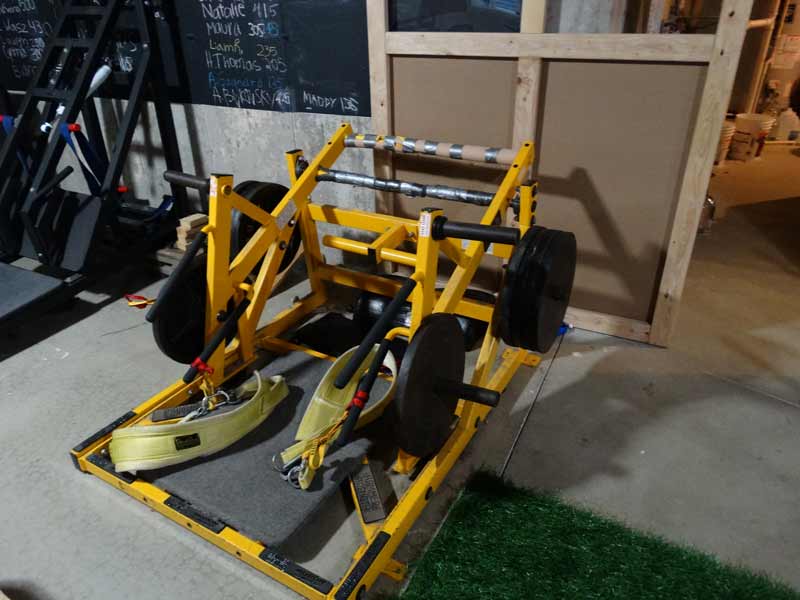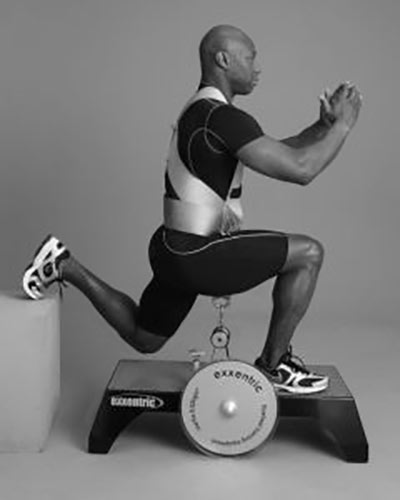[mashshare]

Throughout my followings of internet gurus, I have met, tried, experimented, visited, believed and argued many different points at different times. Louie Simmons was my first. I subscribed to Powerlifting USA to read his column, bought chains, bands, glute ham machines, reverse hypers and a Westside Barbell T-shirt which he gave me (the dog on the shirt was actually his dog). I spent multiple days at the old pizza shop in a strip mall on Demorest Ave in Columbus. Louie is a great coach, incredibly knowledgeable and a great person. In fact, he is such a great person that he said to me it was time to move on and learn from others because what he does, powerlifting, could only get me to a certain point. I needed new concepts that would get me closer to my goal of developing sprinters. He introduced me to John Davies, and I learned a lot. But I still needed more. I saw Bompa, Verkhoshanky, Siff, Weyand, Schroeder, Poliquin, Pfaff, Seagrave, and others speak on multiple occasions. I was one of the first in the US to have a Nemes vibrating plate sold by the Kraaijenhofs and delved into the Bosco stuff. My success was good but not where I wanted to be. Dan Fichter of wannagetfast, got us connected to DB Hammer who was selling limited consultations; we paid to have questions answered and teach us how to build programs that got great results for high school athletes. DB taught me the importance of the Bulgarian split squat and isometric strength. Thus, my love affair began.
Split Squat Technique Generates Biggest Gains
Test an athlete on a movement that matters—40 yard dash, vertical jump, etc.—create a workout, stay with something for three weeks and remeasure. Repeat with others and see what works.
Along this journey, I have kept data on my athletes. I am a track coach who has access to many athletes with a variety of capabilities, and I have a gym and train athletes in a one on one/small group setting. And with these groups, I have always tried to keep notes, film and results on my athletes because my quest is to find exercises that improve athletic development and more importantly sprinting speed. Test an athlete on a movement that matters—40 yard dash, vertical jump, etc.—create a workout, stay with something for three weeks and remeasure. Repeat with others and see what works. For me, the isometric split squat has been a staple that generates powerful athletes. My fastest guys, 10.5-10.8/100m range have always had the strongest “holds” – that is what we call them – and they all jump between 35 to 40 inch vertical jump.

The evolution of the exercise for me has been an interesting journey. Holding heavy weight in that position can be difficult, even with the safety squat bar. So, while assembling my gym, I came across a yellow Hammer Strength Deadlift machine on eBay for $200 in Seattle. I won it and paid $400 for shipping, and it changed my gym. It came with a bar installed to put your back foot on, and all we had to do was grab and hold for the allotted 30 sec. The problem was that grip strength became the limiting factor. We added straps, but that didn’t work. We tried a variety of belts, OK for some people. But thanks to iron mind straps and Spud belt-squat belts, we put together a system that is very effective because the weight goes to the lower body and is not limited to upper body strength.

The position of the athlete may vary. But, basically, one foot goes forward, and one goes back. The weight should hang along the side of the hip, so the weight doesn’t pull the athlete forward. When the athlete squats into position, the knee moves forward over the second toe, and the hips sink back into a squat position. My cue for the athlete is to think that a rope is pulling your knee forward, and a rope is pulling your hips back to stretch the hamstring. It should look like a chair tipped forward. The athlete should feel the pressure in the glute and hamstring of the forward leg and a stretch in the hip flexors in the rear leg. If an athlete feels it in the lower back or quad, their form is off, or the weight is too much. Some athletes get a more intense contraction going down deeper while others get a better contraction not going down as far or even slightly leaned forward. I think the ankle rocker (knee going forward) is key. Once the ankle breaks 90 degrees, the athlete will get a good glute contraction. Another cue is that the shin should be parallel to the spine. That is the perfect position to get a good hip drive in my opinion. We start with a hold in that position for 30 seconds and continually add weight as we progress. You will be shocked to see how fast people increase weight. After a couple of weeks of the 30 second holds, we progress to the Cal Dietz Triphasic holds, where the athlete drops down fast holds for a three count and powers up. A coach can always change the workout with supersets and giant sets by adding single leg jumps or drops from a box.

What I have found is that the stronger athletes get at this exercise, the faster they run and the higher they jump. I have had athletes who could squat the house but couldn’t run or even hold their body weight in the position. But, once their body learned the position and strengthened this aspect of their movement, they ran faster and jumped higher. Athletes that start with me who can already run may not be great at some of the traditional lifts but always seemed to do very well in the isometric exercises.
Why do I think this is the case? Isometric strength is responsible for stopping the momentum from an action. So, going down in a vertical jump, there needs to be a strength type to stop the movement going down. Most people are slow to reverse this momentum and lose energy in the concentric portion of the jump. Another way to look at it is that it creates a platform to push from. A rubber ball works great on concrete but not so great on sand.

My latest excursion takes this concept one step further, inertial training. Or in my case, an Exxentric kBox from SimpliFaster. It is a flywheel concept where one pulls on a cable that is connected to a flywheel. As they pull, the wheel spins. At the end of the strap, the flywheel reverses directions and pulls the strap back to the origin. The key is that the athlete stops the spin and reverses the wheel. By the way, the wheel pulls back harder than the concentric pull. Some people call this eccentric training and it is. But, as I sit and spot on my kBox, I have noted that the more explosive people are the ones who can stop that wheel more quickly than others. Again, they are stopping a momentum, in this case a fast moving cable trying to suck them through a small hole in a 25 pound machine. Even more interesting is that fact that as some of the athletes who are less explosive got stronger in their isometric squats, the better they reversed the wheel and the higher they jumped and the faster they ran. So the combination of these tools has been very effective in training athletes to be more explosive.
Since you’re here…
…we have a small favor to ask. More people are reading SimpliFaster than ever, and each week we bring you compelling content from coaches, sport scientists, and physiotherapists who are devoted to building better athletes. Please take a moment to share the articles on social media, engage the authors with questions and comments below, and link to articles when appropriate if you have a blog or participate on forums of related topics. — SF
[mashshare]





